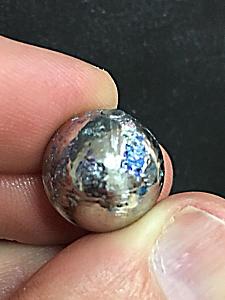My understanding, gained from the Fryxall work From Ingot to Target (chapter 4) is that oxidation of the lead will occur if the top of the melt is exposed to oxygen. To prevent this oxidation you need a barrier between the melt and the oxygen. One of the purposes of a flux is to create that barrier to prevent oxygen from reaching the top of the melt. From Fryxall's work:
Ideally, the flux material could also be a cover material and form a barrier layer to protect the molten metal from subsequent oxidation, thereby maintaining optimum casting properties throughout the course of the casting session. We also want to prevent the oxidation and loss of arsenic. Arsenic oxides have very high vapor pressures and are readily lost through evaporation, not only depleting the alloy of a potentially valuable component (arsenic allows the alloy to be heat treated, if desired), but also creating a significant health hazard to the caster. A reducing cover material prevents this loss.
As I've stated I tried wax to create this barrier and did not like how it performed. Sawdust has been much easier to use as a cover material and effective in preventing the oxidation that would otherwise occur on the top of the melt. I don't stir this material around when I add it to my casting pot. I let it char and then spread it carefully across the top of the melt to cover the entire top of the melt. From then on I cast boolits, leaving the top of the melt alone. My alloy is cleaned during smelting so I see no need to stir the flux in to the alloy. I simply want to use this material to lay on top of the melt to prevent oxidation. I should note that I don't add any material back to the pot while this cover layer of charred sawdust is on top. Before I add any more alloy to the pot this cover layer is removed. This is what I do and why I do it this way. Works for me.


















 Reply With Quote
Reply With Quote














